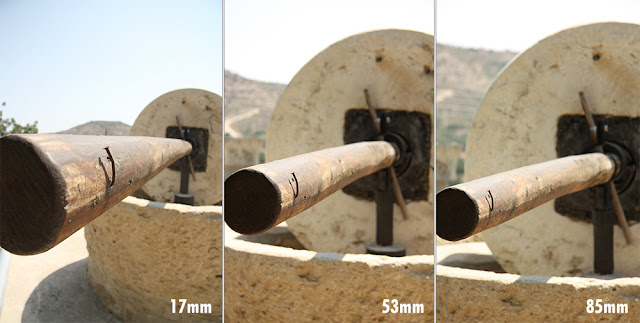If you have
an SLR or dSLR camera then chances are, you are wondering which lens to buy,
which working focal length to invest in. Well in case you haven’t figured it
out yet, the answer is simple (in the sense of choosing your focal length), get
what you need for the things you like shooting the most. And please don’t ask
about “how X zoom” the lens has, as that is just a marketing trick and means
nothing about the lens really. A 70-200mm zoom lens is less useful than a 24mm fixed length if what you like shooting is street scenes, and like wise a 600mm lens is more useful than a 17-85mm zoom lens if you like shooting wild life. If you are still confusing the wide and narrow
focal lengths, think of it like this: The higher the mm number, the further
away you’ll see. The smaller the number, the closer you’ll be able to see (This is just a way of thinking about it if you are confused, the mm rating means something else in reality!).
200mm is narrower than 24mm because it translates into an angle of view; with a
200mm lens having a narrower view cone than the 24mm.
Another
thing that a lens’s focal length changes is the perspective, or how things
look. People keep saying that you need a 40-50mm lens. The reason behind it
might stem from the fact that it was the lens being given away with cameras
most often back when film SLR cameras started popping out or that lenses in that focal range are closer to
the human eye in terms of perspective distortion, or rather the lack of it.
What do I mean with that is that lenses outside that range tend to change how things
look depending on how much wider or narrower the focal length is when compared
to the 40-50 range. Check out the old stone olive press.
The reason
is that the wider the lens, the closer you can get your subject. But the closer
you get, the closer some elements of your subject get to the lens, while the
things further away don’t, or at least not in any significant distance.
Remember those scenes in comedies where the teacher points at a pupil and the
view from the pupil is distorted with the teacher’s finger almost touching the
kid’s nose, an elongated arm like a bridge and the teacher almost in the back
of the frame? That is what you get when you use a really wide lens and have a
subject that is really really close to it. If you go narrower than the 40-50mm
range into let’s say 200+, then you get the exact opposite effect. Things get
squashed and they lose their extreme depth.
So,
remember that when you want to take some portraits. Don’t put up your ultra
wide lens and go close to them or they will start complaining about their nose
looking like Rudolf. Use a narrower range, like let’s say 70-80 and just take a
few steps back if you are too close. (On the other hand, if you are going to
take pics of some kids with a sense of humor, you might want to use that ultra
wide to make for some wacky perspective.)


No comments:
Post a Comment